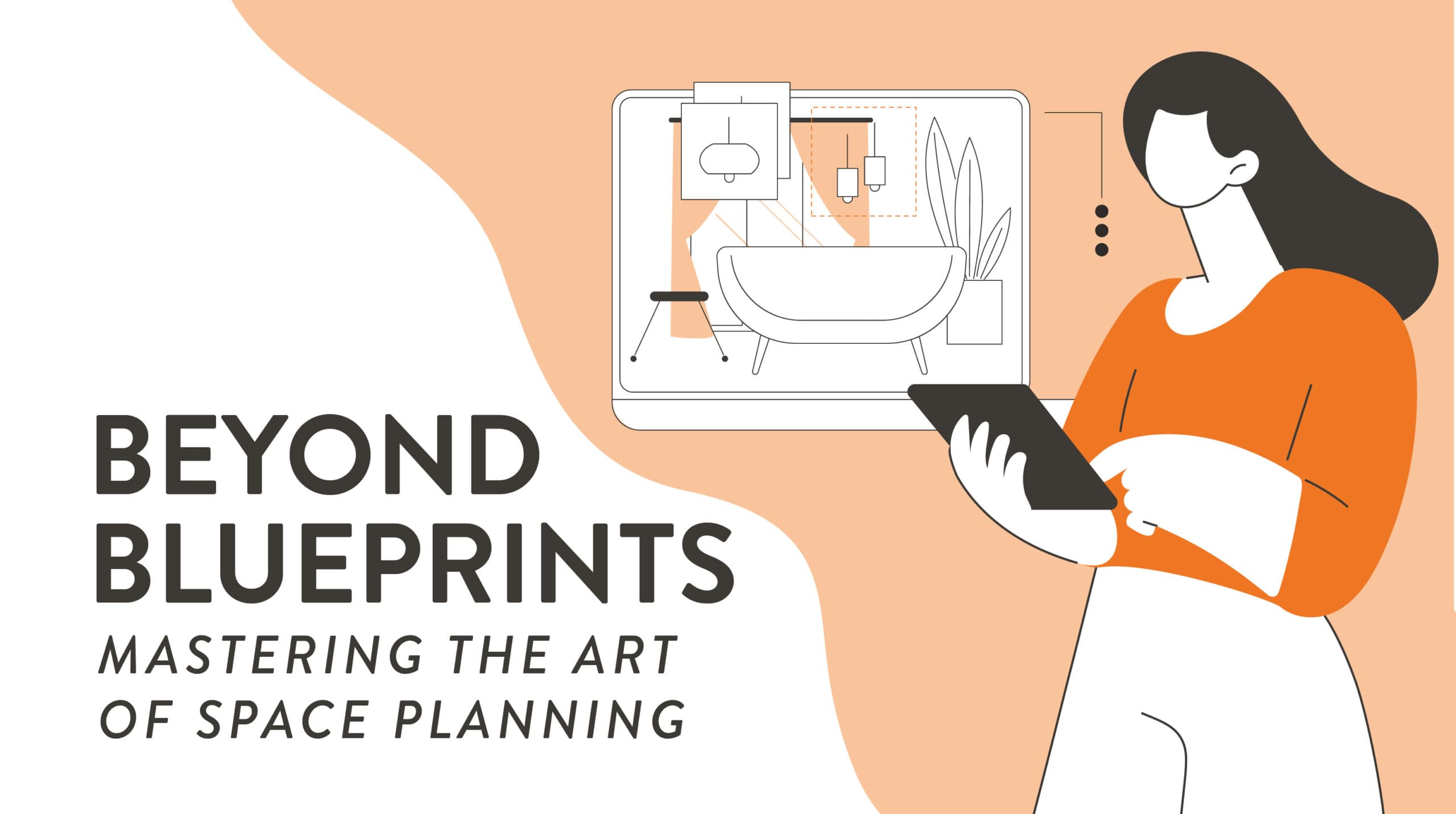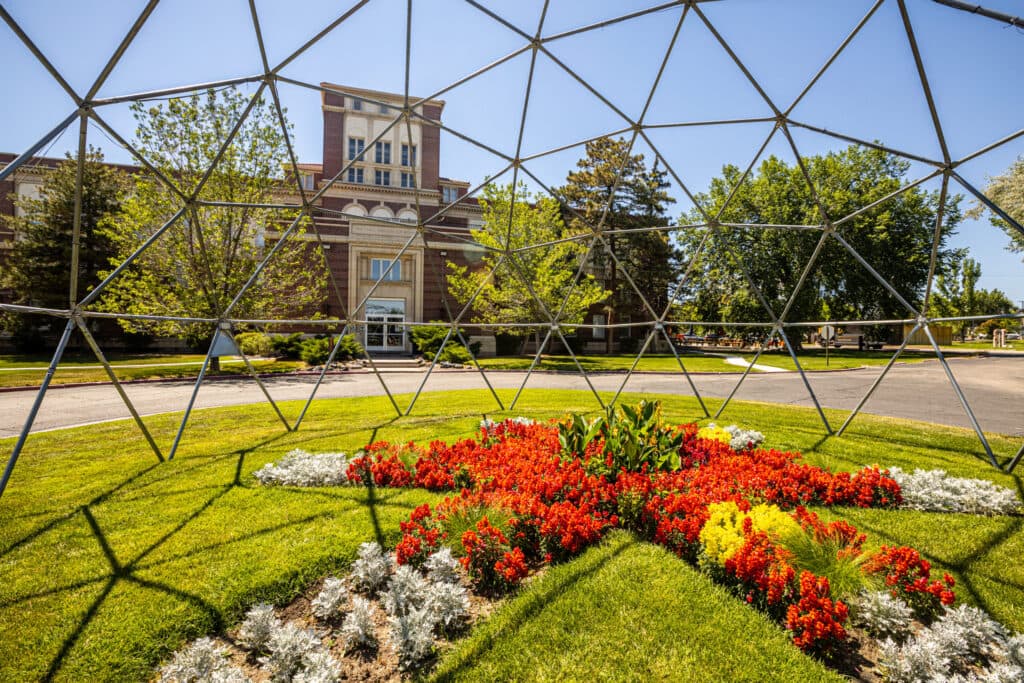What is space planning? Picture this – you just moved into a new apartment. You are about to bring in all your plants, your books, and your decor, but before you can decide where they will all go, you need to answer some big questions. Where will you put your couch? How about the bookcase? Do you have space for a coffee table? Planning your space can be as exciting as it is exhausting. Whether you are looking to rearrange your bedroom or are seriously considering a future in interior design, this blog will help you master the art of planning your space!
Fundamentals of Space Planning
While there are several fundamentals of designing a space, the three we will focus on in this blog are size, shape, and function. These simple principles, when considered properly, can go a long way in maximizing the design of your space.
First, size deals with both the square footage of a room and the items within it. Without properly accounting for size a space may feel either crowded or empty, and in unique cases, a space can even be both. Take the time and measure room dimensions as well as your furniture and other large items. For example, if you have a sectional couch you plan to face towards your television you may consider putting it in a corner to maximize the space even though no matter where you put it in a room it will take up the same number of square feet.
Next, considering different shapes can drastically change how we perceive a space. Utilizing a variety of shapes gives a space more personality and can even provide balance in interior design. Take the example of the sectional couch: a circular coffee table may provide more space in front of the couch and will grant the surrounding area a more open and welcoming feeling.
Last, but certainly not least, is function. Function is usually the number one concern when designing a space. If you often eat on your couch then you may consider ditching the idea of a sectional and a coffee table, opening the corners up for end tables to set drinks down and space ahead of you for TV trays. Before designing a space ask yourself “What will I do here?”, the final result should be a response to that question.
A User-Centric Approach to Space Planning
User-centric design is a key tenant of modern architecture, but can also be harnessed in interior design space planning to address certain issues. This approach puts function first when designing a space. There are four steps to user-centric design: understand the context of use, specify user requirements, design solutions, and evaluate against requirements.
For example, you might consider reorganizing your kitchen using the user-centric four-step-process. First, you should consider everything you do in your kitchen, which would likely include cooking. Next, specify the things you require to use the space. For example, you might also like to watch cooking shows in the kitchen to try new recipes. Then, you can design solutions for your kitchen such as leaving wall space to mount a larger TV. Finally, consider how this result might affect how you utilize your space. Do you need that wall space for storage? If so, then repeat this process with that consideration
Space Planning in Residential Environments
In residential space planning you will likely have much more say over how things are oriented than you might elsewhere. However, you may also have to consult with family members or roommates to create a space that is functional and aesthetically pleasing for everyone. As such, one of the most important things you can do when designing your space is to decide on common design features. Does your home need a kitchen island? Do any items happen to match? Should there be a unified color palette? Answering questions like these can assist in designing a home for both aesthetic and functional purposes.
However, one of the biggest hurdles that you may face when focusing on a new space is designing for multiple purposes. If you live with roommates or family members you may each use the same room for different purposes. Thus, our space needs to reflect our multifaceted use of it. For example, a dining room table might double as a crafting station to work on your art. If so, you will likely want to create a storage space in your dining room to put your crafting supplies away while you eat, while keeping them readily accessible for when you transition to a different activity.
Office and Commercial Space Planning
The fundamentals of residential and commercial planning may be the same, however, the two spaces serve entirely different purposes at their core.
Many office spaces, whether they are shared or individual, prioritize function over all else. However, without comprehension of the other fundamentals of design, office space planning can lead to inefficiencies. Consider the example of open-concept office spaces, these aesthetically pleasing spaces have been lauded for driving collaboration. However, they are also known to cause distractions. A functional approach that many commercial spaces use to capitalize on the best of both worlds is providing private rooms and alcoves accessible to employees, known as flexible workspaces.
Similarly, customer experience design plans a commercial space not just around its employees but also around customers. This might not be necessary for all commercial spaces but this design style is popular in service-oriented industries such as restaurants and hotels. This customer-centric model may include additional seating, background music, and decor.
Sustainable Space Planning
Sustainability is primarily a consideration for architects and designers who are building a space from the ground up. Selecting ethically sourced materials, ensuring clean air quality, and energy efficiency are likely not your first considerations when planning a new bedroom. However, do not discount these practices as they can easily be harnessed to your advantage.
Purchasing second-hand furniture from a thrift store will not only save you money but it is also good for the environment. Second-hand furniture can bring a vintage aesthetic to a room and some older pieces are often more sturdy than new furniture you will find at a similar price point.
Certain house plants such as Bromeliads and Spider Plants can help with indoor air quality. These natural air purifiers can filter out undesirable pollutants we encounter in our day-to-day lives, and can breathe added freshness into a space, particularly during times of the year when opening a window may not make sense. Not to mention how great houseplants can make an otherwise drab room look spectacular.
By harnessing the natural light in a space you can not only decrease your energy consumption by keeping your lights on less, but it also has biological benefits. Try not to block windows or doors that let natural light in, and if you have mirrors that you plan to use to decorate your space try facing them on walls opposing these openings to reflect the most light possible back into your space.
The Role of Technology in Space Planning
Luckily in the 21st century, we have a wide variety of tools designed to assist in space planning. With virtual and augmented reality applications, you can now create 3D scans of your space to conceptualize how different furniture and decor might look in a space.
Homestyler is an application available on both the Google and Apple app stores. With multiple price points, this space-planning software is great for casual and e professional interior designers. It allows you to virtually render your space, fill it with digital furniture, and then tour the space using VR.
Pinterest is not specifically for interior design but it sure is handy when you need some inspiration. Explore a seemingly endless library of uniquely designed spaces. If you ever get tired of browsing home interiors you can always head over to the Pinterest shop, and begin purchasing decor for your dream home.
Space planning can be rewarding and time-consuming all at the same time. However, if you focus on the fundamentals, utilize a user-centric approach, consider the differences between residential and commercial space planning, find ways to be sustainable, and capitalize on technology, then you will do just fine! Even if you are only able to use one or two of these principles, you are still on your way to mastering the art of space planning.
Learn More about Interior Design at RMCAD
Follow the links below to learn more about RMCAD’s Interior Design program both on-campus and online. For another blog about Interior Design, check out Interior Design Student Shares Her Experience Transferring to RMCAD.

